Explaining TOF Sensors: Types, Applications, and Capabilities Shaping the Future
2024.02.21
- LSI Circuit Design
The TOF sensor market is being energized by advancements in technology, decreasing sensor costs, and increasing demand for automation and safety across various industries. Furthermore, the proliferation of IoT devices and the growing need for precise distance measurement are further driving this growth. As a result, significant growth is expected in the future, with the market expanding.
We are advancing the high value-added technology in TOF sensor development and conducting the design and development of integrated module products.
In this article, we will introduce explanations about TOF sensors along with our development achievements.
We are advancing the high value-added technology in TOF sensor development and conducting the design and development of integrated module products.
In this article, we will introduce explanations about TOF sensors along with our development achievements.
What is a TOF Sensor?
First, let's provide an explanation of TOF sensors and introduce real-world examples of their use in everyday settings.
TOF stands for "Time Of Flight."
TOF sensor measures distances based on the time it takes for a signal it emits to reflect back from an object. In simple terms, it's a sensor that detects the distance to an object.
TOF stands for "Time Of Flight."
TOF sensor measures distances based on the time it takes for a signal it emits to reflect back from an object. In simple terms, it's a sensor that detects the distance to an object.
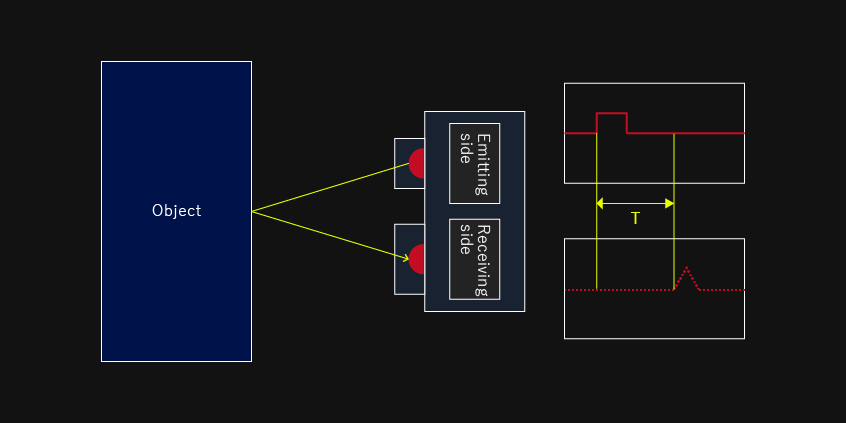
TOF sensors are widely used in our everyday lives.
Here are some applications:
- Automobiles (In-Vehicle)
- Collision avoidance
- Parking assistance
- Autonomous driving
- Smartphones
- Facial recognition
- Camera autofocus
- Robots
- Drones
- AR/VR
- IoT
- Various household appliances
- Medical field
- Count the number of people
- Industrial equipment
What types of TOF sensors are there?
There are three main types of TOF sensors:
Let's explain each type:
- LiDAR (Optical)
- Radar (Radio waves)
- Sonar (Ultrasonic)
Let's explain each type:
LiDAR (Optical):
LiDAR stands for "Light Detection And Ranging."
It works by emitting laser light onto objects and measuring the reflected light to calculate the distance to the objects.
It works by emitting laser light onto objects and measuring the reflected light to calculate the distance to the objects.
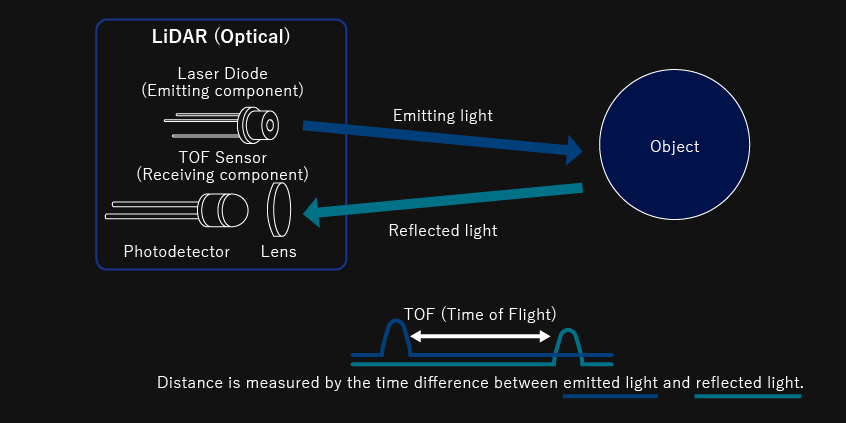
Radar (Radio waves):
Radar stands for "Radio Detecting and Ranging."
It involves emitting radio waves towards a target and measuring the reflected waves to determine the distance to the target.
It involves emitting radio waves towards a target and measuring the reflected waves to determine the distance to the target.
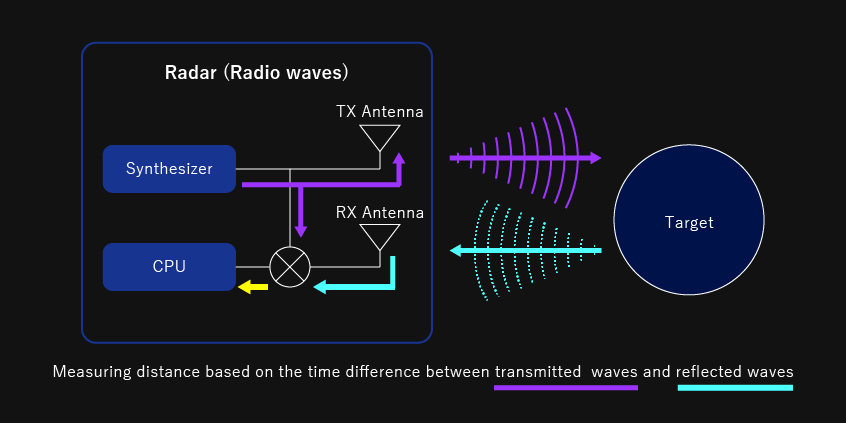
Sonar (Ultrasonic)
Sonar stands for "Sound Navigation And Ranging."
It works by emitting ultrasonic waves towards objects and measuring the reflected waves to calculate the distance to the objects.
It works by emitting ultrasonic waves towards objects and measuring the reflected waves to calculate the distance to the objects.
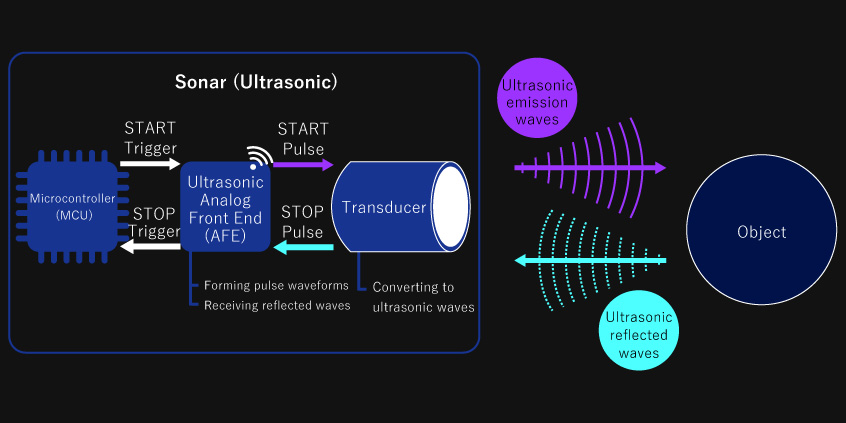
Characteristics of LiDAR (Light Detection and Ranging), Radar (Radio Detection and Ranging), and Sonar (Sound Navigation and Ranging)
Differences and Characteristics of LiDAR (Light Detection and Ranging), Radar (Radio Detection and Ranging), and Sonar (Sound Navigation and Ranging):
| LiDAR (Light Detection and Ranging) | Radar (Radio Detection and Ranging) | Sonar (Sound Navigation and Ranging) | |
|---|---|---|---|
| Measurement Range | ○ Up to tens of meters | ◎ Up to hundreds of meters | △ Up to several meters |
| Measurement Accuracy | ○ In millimeters | ◎ In increments of 0.1 millimeters | △ Around 10 millimeters |
| Detection Speed | ◎ 300,000 kilometers per second | ◎ 300,000 kilometers per second | △ 331.5 meters per second |
| Measurement Environment (Weather/Lighting) |
△ | ◎ | ◎ |
| Cost | Expensive | - | Inexpensive |
| Wavelength | ◎ Short Approximately 1 micron |
〇 Medium 1 millimeter to 10 millimeters |
△ Long 10 centimeters to 100 centimeters |
| Spatial Resolution | ◎ High Several centimeters at a distance of 100 meters |
△ Low Several meters at a distance of 100 meters |
△ Low |
| Use Cases (Automobiles) | Environment recognition for autonomous driving (3D measurement) | Collision avoidance | Parking assistance |
- LiDAR offers high detection speed and high spatial resolution due to its short wavelength. However, it is susceptible to weather conditions and tends to be expensive. These characteristics make it suitable for applications such as environment recognition for autonomous driving (3D measurement).
- Radar offers long measurement range and high measurement accuracy. It also has fast detection speed and is less affected by weather conditions and lighting. However, its spatial resolution is not as high, with errors of several meters at a distance of 100 meters. These characteristics make it suitable for applications such as collision avoidance.
- Sonar (Sound Navigation and Ranging) is less affected by measurement environment and lighting conditions, and it is cost-effective. However, its measurement range is short, typically only a few meters, and its measurement accuracy is not particularly high. These characteristics make it suitable for applications such as parking assistance (notifying obstacles during parking or maneuvering out).
SANEI HYTECHS' TOF Sensor Development Achievements
Here, we present a portion of our development achievements.
The areas enclosed by the yellow lines represent the scope of our development achievements.
The areas enclosed by the yellow lines represent the scope of our development achievements.
Development Achievements of Sonar (Sound Navigation and Ranging) Transmitters and Receivers
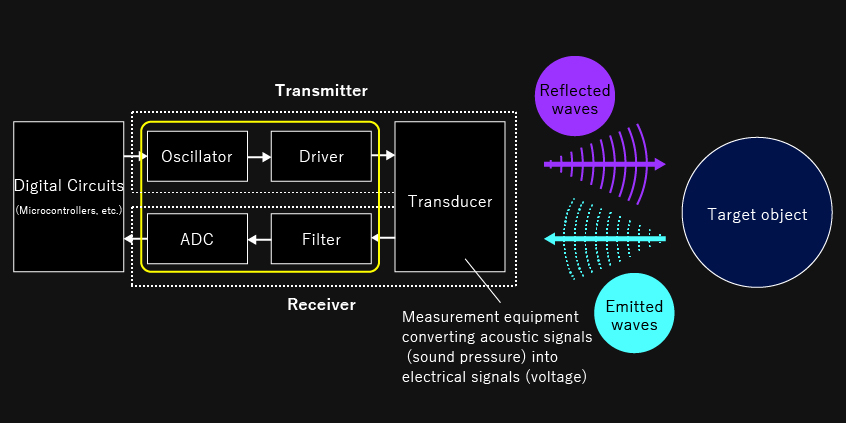
Development Achievements of LiDAR (Light Detection and Ranging) Laser Diode Driver (LDD)
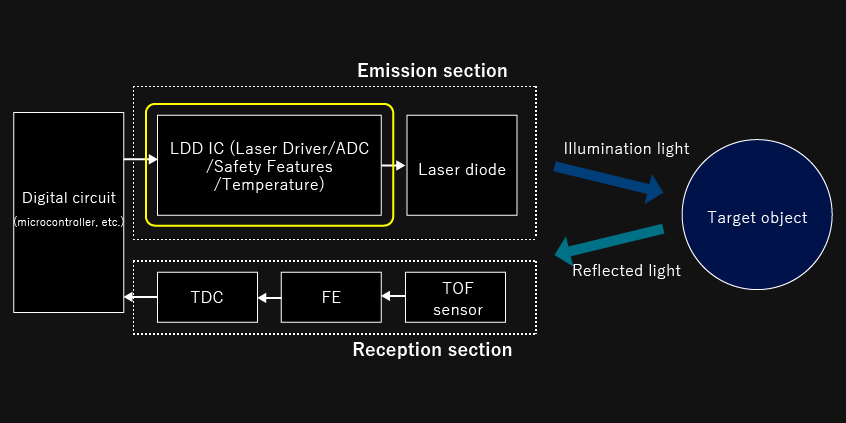
Additional Explanation:
ADC
ADC stands for Analog to Digital Converter.
It is a device that converts analog signals into digital signals.
It is a device that converts analog signals into digital signals.
LDD
LDD stands for Laser Diode Driver, which is a device used to drive laser diodes.
TDC
TDC stands for Time to Digital Converter, which is a device that converts analog quantities of time into digital signals.
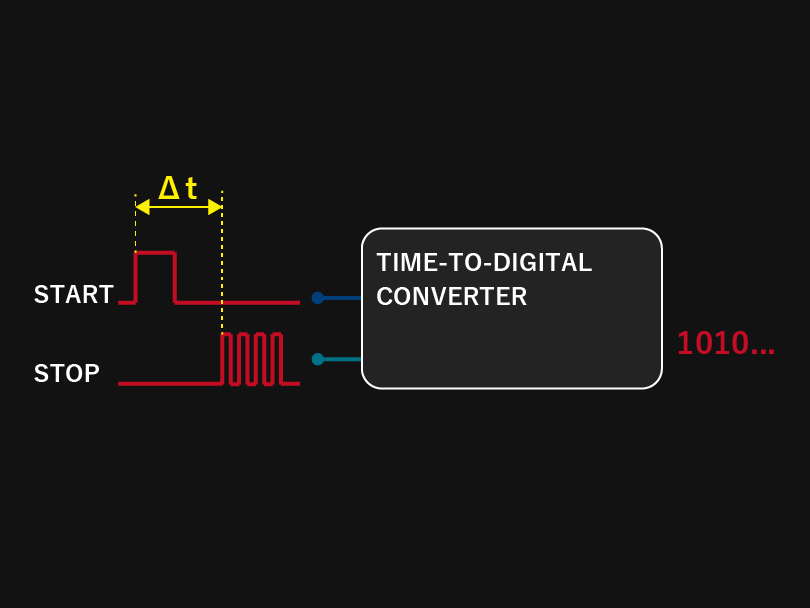
Distance = (Speed of light) × (Time of flight (Δt)) / 2
| Time of flight | Distance |
|---|---|
| 1us | 150m |
| 1ns | 15cm |
| 10ps | 1.5mm |
Characteristics of TDC
This is a "time resolution-type" analog circuit that processes analog signals along the time axis instead of the voltage axis.
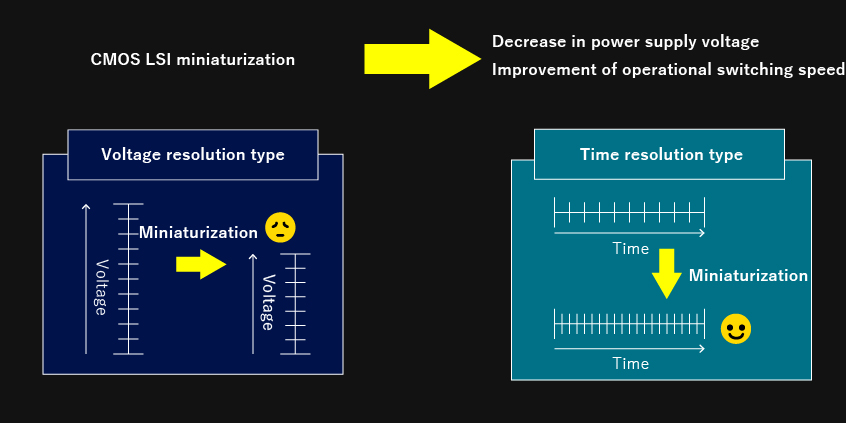
Currently, TOF sensors are widely used and applied across a broad spectrum of fields, ranging from household appliances to automobiles and robotics, with significant growth and technological innovation anticipated. They enable more precise distance and depth data, shaping the future of technology and automation across various sectors.
We are driving the advancement of high value-added technology in TOF sensor development and conducting the design and development of integrated modular products.
We are driving the advancement of high value-added technology in TOF sensor development and conducting the design and development of integrated modular products.
![[Image]SANEI HYTECHS](/en/shared/img/logo_w.png)